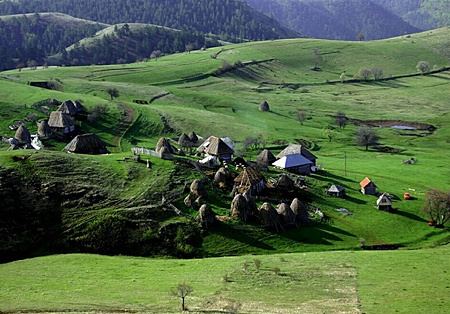 | ||
Raška (Serbian Cyrillic: Рашка) or Old Raška (Стара Рашка) is a region in south-central Serbia, Kosovo and northern Montenegro. In Serbia, the Raška District, Zlatibor District and Moravica District.
Contents
In the Middle Ages, the region was a center of the Serbian Principality and of the Serbian Kingdom whose capital was once the city of Ras (a World Heritage Site) until 1265. In the Early Middle Ages, it had parts of present-day southern Serbia, Kosovo, northern Montenegro, eastern Herzegovina. It has given its name to the Raška municipality and town and Raška District.
Sub-regions
Name
The name is derived from the name of the region's most important fort, Ras which first appears in the work de aedificiis of Byzantine Procopius as Arsa prior to the forming of Serbia (Procopius, De aedificiis, IV 4). Ras eventually became the capital district and seat of the first bishopric of Serbia (the Eparchy of Raška and Prizren). The name of the bishopric eventually started to denote the entire area under jurisdiction and later, under Stefan Nemanja, Ras was re-generated as state capital and as such it has at times been used by some in historiography to refer to Serbia from the early 12th to the early 14th century. It had begun its use as an exonym for Serbia in Western European sources in the early 13th century, along with other names such as Dalmatia and Slavonia. The first attested appearance of the name Raška is in the Kotor charter (1186), in which Stefan Nemanja is mentioned as župan of Raška. Soon after Raška (Rascia) became an exonym for Serbia in western sources (Papacy, German, Italian, French etc.) often in conjunction with Serbia (Servia et Rascia). However, that name appears scarcely in medieval Serbian and never in Byzantine works to denote the state.
Between the 15th and 18th centuries, the term Raška (Rascia, Ráczság) was used to designate the southern Pannonian Plain inhabited by Serbs (Raci), who settled there during the late Middle Ages, the Ottoman period and the Great Serb migrations from medieval Serbia, "Rácz" has survived as a common surname in Hungary.
Middle Ages
Raška (in Latin Rascia) was a medieval region that served as the principal province of the Serbian realm. It was an administrative division under the direct rule of the monarch and sometimes as an appanage. The term has been used to refer to various Serbian states throughout the Middle Ages. It was the crownland, seat or appanage of the following states:
In Constantine Porphyrogenitus' De Administrando Imperio, Ras is mentioned as an important town of Serbia under Časlav Klonimirović (927–960) near its border with the First Bulgarian Empire. Constantine's Serbia is often identified as Raška by modern historiography to differentiate it from the other provinces ruled by these early Serbs: Zahumlje, Travunia, Duklja and Pagania. Porphyrogenitus uses Serbia as a name for the mainland regions of Rascia and Bosnia; although the name comes to denote "all of Serbian lands" as an exonym.
Modern
Between 1918 and 1922, Raška District was one of the administrative units of the Kingdom of Serbs, Croats and Slovenes. Its seat was in Novi Pazar. In 1922, a new administrative unit known as the Raška Oblast was formed with its seat in Čačak. In 1929, this administrative unit was abolished and its territory was divided among three newly formed provinces (banovinas). The region is a part of the greater "Old Serbia"-region used in historical terms.
Culture
Some of the churches in western Serbia and northeastern Bosnia were built by masters from Raška.
